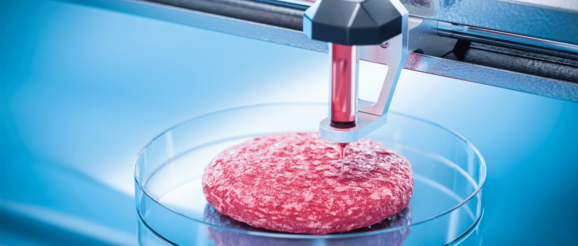Edible Innovation: How 3D Printing is Transforming Your Meals

Imagine a world where the food on your plate isn’t just cooked, but intricately ‘printed.’ Yes, you read that correctly – ‘printed’ food! This cutting-edge technique is reshaping how everyone thinks about food preparation and consumption. It’s not just about printing plastic or metal objects anymore; it’s about creating actual, edible food in complex shapes and forms. But what exactly is 3D-printed food? How does it transform a digital blueprint into a real, edible, and potentially delicious meal? And why are some of the biggest names in healthcare, space exploration, and even environmental conservation paying close attention to this technological marvel?, especially with innovations like 3D Printed Meat taking center stage? It is time to explore how 3D printing is rewriting the rules of cooking, one layer at a time. What’s 3D-Printed Food All About? In simple terms, 3D-printed food is exactly what it sounds like: food prepared using 3D printing technology. Imagine a printer, but instead of ink, it uses edible materials to ‘print’ food. It’s like crafting an intricate sculpture, but in this case, you can eat the final product! From chocolate and pasta to the more complex and groundbreaking 3D Printed Meat, the possibilities are as limitless as they are exciting. Bryan Quoc Le, a renowned food scientist, explains it in a fun way: “Think of it like using Lego blocks to build something. With 3D printing, you can create food in any shape you like, while also fine-tuning its nutritional value and taste.” Now, how does this all work? It’s pretty fascinating. The printer builds the food item layer by layer, following a design from a digital file. But instead of traditional materials, it uses things like chocolate, cheese, dough, and even more complex ingredients like cultured meat and pizza dough. This technology isn’t just cool; it’s also practical. It’s grabbing the attention of big names in various industries. Healthcare companies are exploring how to use it for patients who have trouble swallowing. Even NASA is interested in how it can provide nutritious meals for astronauts in space! Moreover, sustainable food enterprises are exploring 3D printing as a method to revolutionize food production and challenge traditional farming practices. The Steps of 3D Food Printing The journey begins with creating a 3D digital model of the food item. This design, crafted using specialized software, outlines the shape and structure of the dish. Next, the chosen food material is prepared to a consistency suitable for printing. This could be anything from chocolate to cheese or a savory meat puree, tailored to flow smoothly through the printer. This gets loaded into the printer, which is heated to make the food more moldable. Then, the printer gets to work. As the printer operates, it deposits the food onto a cooled surface, where it sets quickly. This method allows for creating complex and precise shapes, layer by layer. And here’s something really cool: during the process, the food undergoes rapid heating and cooling. This isn’t just about shaping the food; it also helps in stabilizing its structure and texture. The New Frontier: 3D Printed Meat One of the most exciting developments in 3D food printing is meat. Yes, you heard that right – 3D-printed meat! This isn’t your typical meat; it’s made from lab-grown cells, creating a product that looks and tastes like meat without any animal being harmed. Imagine having meat that’s built from cells in a lab. It’s got all the protein, the texture, and the taste of regular meat, but it’s created in a completely different way. The process starts with animal cells, which are then grown in a lab. Over weeks, these cells turn into the fat and muscle needed to make the meat. A robotic arm then precisely layers this material to mimic the structure of real meat. It’s a game-changer, especially for those concerned about animal welfare and environmental issues. Plus, it’s a huge step forward in meeting the growing global demand for meat in a sustainable way. Why 3D Printed Meat Matters So, why should you care about 3D-printed meat? First, it’s customizable. You can literally design the flavor, texture, and nutritional content of the meat. Second, it’s scalable. You can produce large quantities without losing the ability to tailor it to specific needs. Most importantly, it’s a more sustainable way to produce meat. You’re talking about a process that doesn’t involve killing animals, uses less land and water, and produces fewer greenhouse gasses. It’s not just about the meat; it’s about transforming the food system for the better. Looking to the Future 3D-printed food, especially meat, represents a major step forward in how everyone thinks about food. It’s not just a novel idea; it’s a practical solution to some of the biggest challenges facing the world today, from feeding a growing population to tackling climate change. And it’s not science fiction – it’s happening right now. As we continue to explore and refine this technology, who knows what delicious, sustainable, and ethical foods we’ll be able to create in the future?
